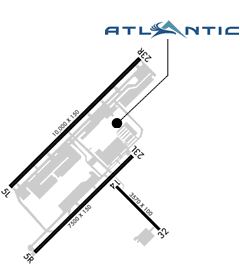SkyHog
Touchdown! Greaser!
- Joined
- Feb 23, 2005
- Messages
- 18,431
- Location
- Castle Rock, CO
- Display Name
Display name:
Everything Offends Me
One evening, I was cleared to land on runway 26 at KABQ....8/26 is a very, very long runway, and most of the time, traffic lands on runway 8. If you land on runway 26, and get off right away, you have approximately a 20+ minute taxi in a straight line to get to the FBO.
Anyways, back to the question...I was cleared to land "long" on runway 26, and I took that to land way, way down the runway to minimize the taxi. This seemed to be what the controller was asking for, but I have to wonder....what is a long landing? If I know I can get down and stopped in 2000ft, can I land at the 2000ft remaining sign? Am I expected to land well beyond the TDZ, but also well short of the displaced threshold for runway 8? Could it be considered reckless to land with just enough room to exit at the last turn off?
What I did was aim about halfway down and I got off around the 17/35 intersection.....but it was weird landing that far down a runway.
What say y'all?
Anyways, back to the question...I was cleared to land "long" on runway 26, and I took that to land way, way down the runway to minimize the taxi. This seemed to be what the controller was asking for, but I have to wonder....what is a long landing? If I know I can get down and stopped in 2000ft, can I land at the 2000ft remaining sign? Am I expected to land well beyond the TDZ, but also well short of the displaced threshold for runway 8? Could it be considered reckless to land with just enough room to exit at the last turn off?
What I did was aim about halfway down and I got off around the 17/35 intersection.....but it was weird landing that far down a runway.
What say y'all?


